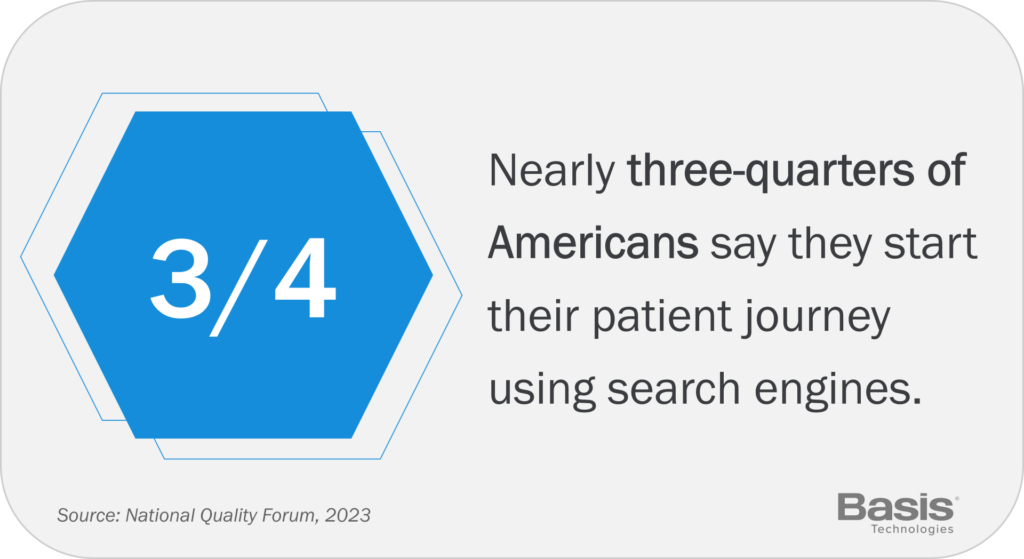
Digital health innovations and technologies are evolving at a rapid pace. More and more interactions are taking place digitally rather than in-person, and individual health consciousness is at an all-time high. Further, health and pharma advertising is undergoing some substantial digital shifts: In 2023, the health and pharma industry spent $17.8 billion on digital advertising, and that number is projected to hit nearly $20 billion in 2024.
In addition to adapting to these factors specific to the healthcare industry, advertisers in the space are making substantial changes to meet the demands of the digital advertising world, including Google’s long-delayed deprecation of third-party cookies in Chrome in the second half of 2024. Considering these complexities, it’s no surprise that the advertising strategies health and pharma brands and agencies use to connect with consumers are transforming at a remarkable rate.
With the increasingly digital nature of the healthcare ecosystem, marketers in the space must be flexible and adaptable. And in this ever-evolving landscape, staying ahead of the curve is not just a strategic choice—it’s a necessity. To that end, read on for three key trends that should be top of mind as we head into 2024:
Beyond the increased privacy and regulatory demands that all digital marketers are encountering, health and pharma advertisers face additional challenges to ensure all their communications adhere to HIPAA regulation. And, thanks to a 2022 Office for Civil Rights (OCR) policy, IP addresses are now considered protected health information under HIPAA. This can make it difficult (if not downright impossible) to use pixels for targeting and measuring while maintaining legal compliance.
This is especially meaningful when it comes to performance marketing, and more and more healthcare brands and agencies are shifting away from these types of tactics and relying, instead, on mixed-funnel media strategies. Moving forward, there will also be an increased focus on awareness-based media, since it can be tracked with third-party brand lift studies while maintaining HIPAA and OCR compliance.
“OK, great,” some healthcare marketers might say. “Does that mean I should throw my lower funnel activities out the window?”
Certainly not! Even when brands can’t accurately measure attribution on their mid-to-lower funnel channels, they nevertheless remain a critical piece of a holistic marketing mix. For example, since brands know that most consumers start their health journeys online, they might focus on search ads and using contextual targeting to ensure such ads are in places where relevant patients are likely to encounter them.

And even though lower funnel attribution is a sticky point when it comes to healthcare marketing, there are ways to evaluate campaign performance to inform future marketing strategies:
Within that larger context of increased regulation and consumer privacy demands, savvy health and pharma marketers will also benefit from auditing past campaigns and applying key learnings to future campaigns in the year ahead. This is especially true when it comes to those aforementioned lower funnel tactics, where attribution can be particularly tricky.
For example, if a brand uses paid search ads to promote their telemedicine offerings to new patients and notices an increase in these types of appointments, they can use that historical performance data to continue to prioritize investment in the channel. Alternatively, if a brand invests in social media ads aimed at getting audiences to opt-in to receive more information about specialized treatments and doesn’t notice an uptick in conversions, they might choose to re-allocate investment in that channel—or reapproach their creative and/or messaging.
Given the increased demand for (and regulations around) patient privacy, 2024 is likely to bring a greater focus on marketing to healthcare providers (HCPs), rather than directly to patients. HIPAA protects individuals’ personal health information, meaning they can’t be targeted based on conditions, IP address, etc. But that doesn’t mean that HCPs that treat specific conditions can’t be targeted. As such more and more health and pharma brands are focusing their efforts on targeting HCPs rather than trying to connect with patients directly.
For example, if you’re a pharma brand whose drug treats a specific type of disease, you can’t target patients with that disease, since that’s protected healthcare information. And, thanks to the new OCR guidance, you’re even limited when it comes to targeting IP addresses within a certain location of a treatment center for that disease. So, what you can you do? Use job title-based targeting to reach HCPs who treat that disease. Once they have a greater awareness of your drug and its benefits, they may then be more likely to turn around and recommend it to patients.
It’s clear that the healthcare landscape today is complicated and that brands and agencies in the space face distinct challenges. By leveraging mixed-funnel media to connect with audiences, leaning into historical data to inform future campaign strategies, and shifting focus from patients themselves to their healthcare providers, health and pharma marketers can find success in 2024 and beyond.
__
Hungry for more 2024 trends? Check out our 2024 Trends Report for everything digital marketers need to know for next year.